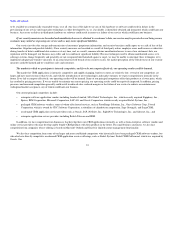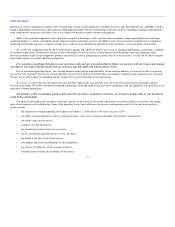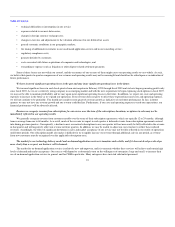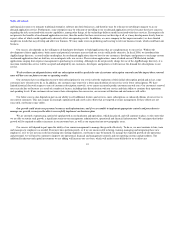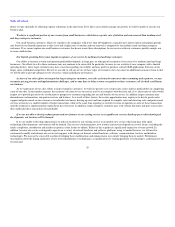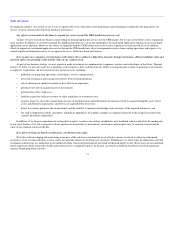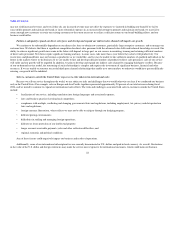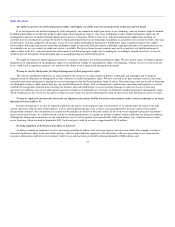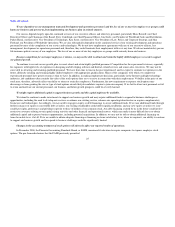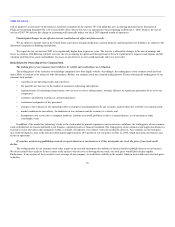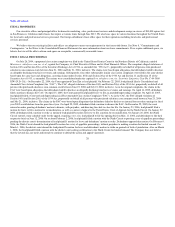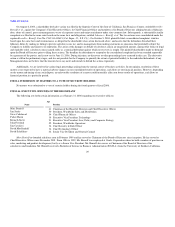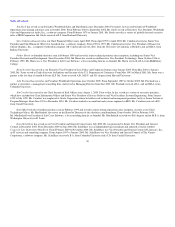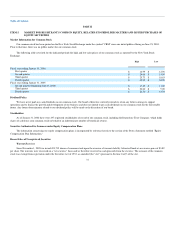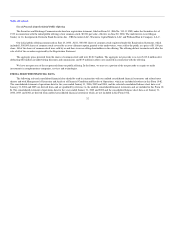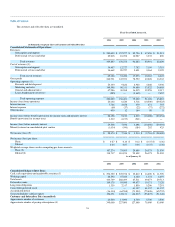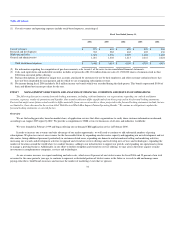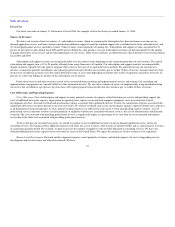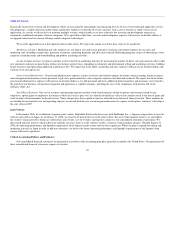Salesforce.com 2005 Annual Report Download - page 29
Download and view the complete annual report
Please find page 29 of the 2005 Salesforce.com annual report below. You can navigate through the pages in the report by either clicking on the pages listed below, or by using the keyword search tool below to find specific information within the annual report.
Table of Contents
will no longer be an alternative to the financial statement recognition of the expense. We will adopt this new accounting pronouncement, Statement of
Financial Accounting Standards No. 123 (revised 2004), Share-Based Payment, on a prospective basis beginning on February 1, 2006, which is the start of
our fiscal 2007. We believe this change in accounting will materially reduce our fiscal 2007 reported results of operations.
Unanticipated changes in our effective tax rate could adversely affect our future results.
We are subject to income taxes in the United States and various foreign jurisdictions, and our domestic and international tax liabilities are subject to the
allocation of expenses in differing jurisdictions.
We expect our tax rate in fiscal 2007 to be significantly higher than in previous years. The tax rate is affected by changes in the mix of earnings and
losses in countries with differing statutory tax rates, the tax accounting for option activities pursuant to the new requirement to expense stock options and the
valuation of deferred tax assets and liabilities. Increases in our effective tax rate could materially affect our net results.
Risks Related to Ownership of Our Common Stock
The trading price of our common stock is likely to be volatile and could subject us to litigation.
The trading prices of the securities of technology companies have been highly volatile. Accordingly, the trading price of our common stock has been
and is likely to continue to be subject to wide fluctuations. Further, our common stock has a limited trading history. Factors affecting the trading price of our
common stock include:
• variations in our operating results and cash flows;
• the quarterly net increases in the number of customers and paying subscriptions;
• announcements of technological innovations, new services or service enhancements, strategic alliances or significant agreements by us or by our
competitors;
• customer cancellations or delays in customer purchases;
• recruitment or departure of key personnel;
• changes in the estimates of our operating results or changes in recommendations by any securities analysts that elect to follow our common stock;
• market conditions in our industry, the industries of our customers and the economy as a whole; and
• disruptions in our service due to computer hardware, software or network problems or due to a natural disaster, act of terrorism or other
catastrophic event.
In addition, if the market for technology stocks or the stock market in general experiences uneven investor confidence, the trading price of our common
stock could decline for reasons unrelated to our business, operating results or financial condition. The trading price of our common stock might also decline in
reaction to events that affect other companies within, or outside, our industry even if these events do not directly affect us. Any volatility in our stock price
may result in litigation, such as the lawsuits following the approximately 25% decline in our stock price on July 21, 2004, which may harm our business and
results of operations.
If securities analysts stop publishing research or reports about us or our business or if they downgrade our stock, the price of our stock could
decline.
The trading market for our common stock relies in part on the research and reports that industry or financial analysts publish about us or our business.
We do not control these analysts. If one or more of the analysts who do cover us downgrade our stock, our stock price would likely decline rapidly.
Furthermore, if one or more of these analysts cease coverage of our company, we could lose visibility in the market, which in turn could cause our stock price
to decline.
26


